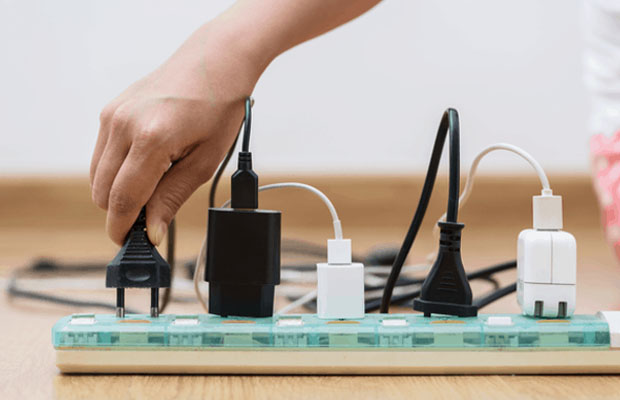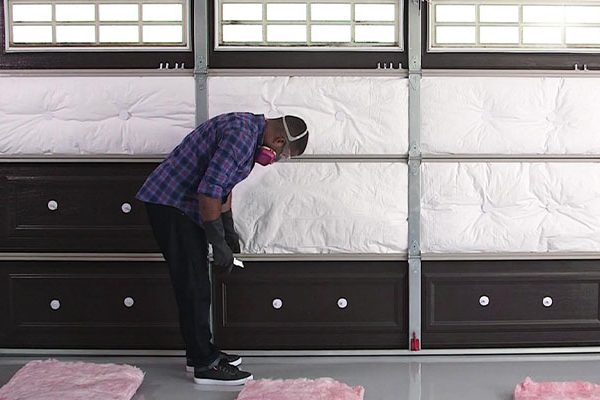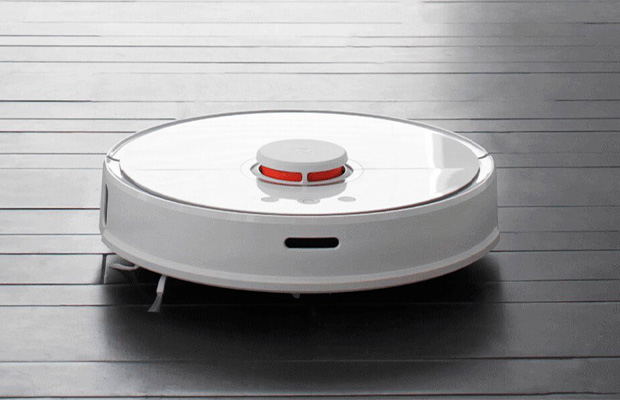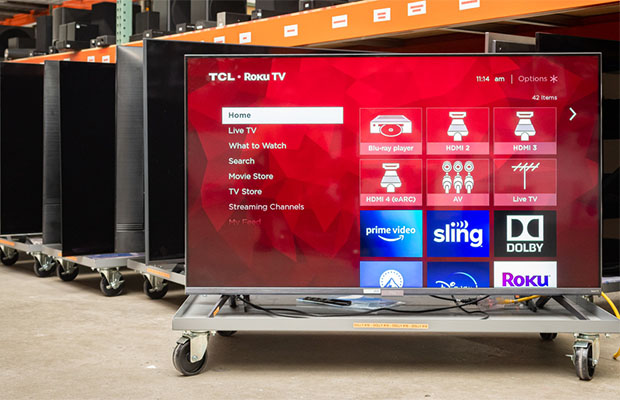Can surge protectors go bad or wear out? Yes, a surge protector will eventually wear out because it isn’t made to last forever. Therefore, even though you may believe your appliances are shielded from harmful power surges, they actually aren’t.
When they plug something into the surge protector and it doesn’t work, many people wonder if the problem is with the surge protector or the outlet. Sadly, it might be the surge protector, which can malfunction even if you’ve only had it for a short while.
Don’t worry, we’ll explain how surge protectors function when you should replace them, and how to protect yourself from electrical surge damage.
Also Read: What Is A Camera PIR Detection?
Table of Contents
- What Is A Surge Protector?
- What’s The Age Of Surge Protector?
- Variations Of Surge Protectors
- Can A Surge Protector Go Bad?
- How To Tell If A Surge Protector Is Bad?
- Tips To Test A Surge Protector
- A “Tiered” Approach Is The Best
- What Will Happen When A Surge Protector Go Bad?
- Tips On When To Replace Your Surge Protector
- Conclusion
What Is A Surge Protector?
Surge protectors are compact gadgets that typically have two functions. One is to enable multiple electronics to be plugged into a single power outlet. Protecting your electrical equipment is the other and most important duty.
Your television or computer, for instance, could be harmed by a high-voltage power surge. A power surge or spike occurs when the voltage rises above the safe level.
Read More: Best Surge Protectors
What’s The Age Of Surge Protector?
The question of how long surge protectors last is difficult to answer.
Even though the majority of surge protectors have a lifespan that is correlated with usage (more on that in the section below), age should still be taken into consideration.
You should definitely purchase a new surge protector if the one you currently own is, say, several years old. A surge protector’s expected lifespan is unknown, but the more recent it is, the better it will function.
Variations Of Surge Protectors
There are two different types of surge protectors. those that can be attached to a power strip or mounted on the wall. Look out for the details regarding these two types of surge protectors below-
Power Strip
The cable is a feature of surge protectors with power strips. You can put them close to your equipment because of this. Some of them have mounting holes so you can hang them on the wall. They typically have 6 to 12 electrical outlets.
Wall Mounted
The wall-mounted surge protectors do not have a cable. Usually, they have between two and six outlets. Small and with a plug that retracts into the device’s housing, mobile variants are available.
An adaptor with multiple plugs or a standard power strip is not the same as a surge protector. More outlets are provided by power strips and converters, but they do not offer surge protection. The packaging’s joule and voltage protection ratings can be used to identify surge protectors.
Read More: Pros and Cons of Whole House Surge Protector
Can A Surge Protector Go Bad?
Users should remember that surge protectors are machines that can malfunction at any time, even though they are frequently dependable and essential.
They have a finite amount of protection they can offer. Additionally, they cannot connect everything to a single surge protector and rely on it to work during voltage spikes.
It loses some of its power to safeguard people’s electronics every time a spike occurs. How frequently it is used affects the surge protector’s lifespan. And how much load it has been able to support, not by how old it is.
The majority of surge protectors have a joule rating. This demonstrates the degree of security that the gadget is meant to offer.
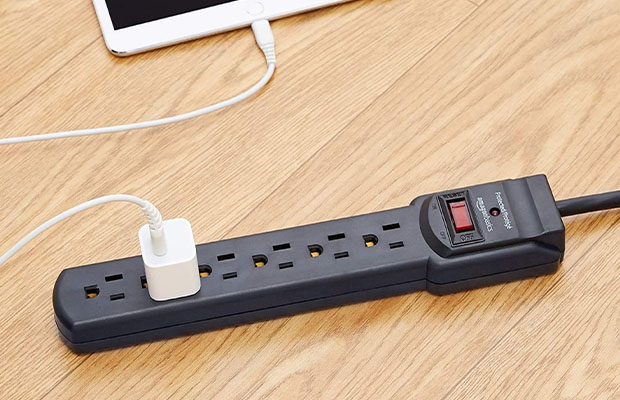
How To Tell If A Surge Protector Is Bad?
The most obvious indication that your surge protector needs to be replaced is age.
Surge protectors typically last three to five years, but some can wear out as quickly as two. It may still function as a power strip and provide electricity, but it will no longer provide the surge protection you need.
Other indicators that your power strip may have been harmed include:
- A surge protector can become damaged if its capacity is exceeded. Most devices have a maximum amount of joules they can handle before they stop working properly. Therefore, if your device is capable of handling 1,000 joules, it will stop functioning once those have been exhausted.
- Typically, a blinking light on the device indicates that you need to replace it.
- using too many devices to overload a surge protector.
You can be on the lookout for a significant overload that might strain your surge protector and take preventative measures like replacing it.
Read More: Can You Hear Electricity?
Tips To Test A Surge Protector
Theoretically, testing your surge protectors could save you a ton of time and effort. Unfortunately, most surge protectors cannot be tested. The best way to monitor whether a surge protector is working or not is probably to keep track of when you bought it because they only last for a short time.
The LED notifications on some devices are numerous. When the surge protection mechanism is compromised, the device will internally detect the issue and trigger an LED message or even an audio alarm to notify the user.
Checking The Light
By simply looking for a blinking light on the device, you might be able to determine when to replace the surge protector. Although not all surge protectors have them, many contemporary ones come with them as a standard feature.
Simply look at your surge protector to see if you can spot a red or green blinking light on the outside of the device.
Please be aware that this is not a failsafe method. The absence of a flashing light does not always indicate that something is okay with your device. You will undoubtedly need a new one if it is flashing, though.
Checking Your Consumption Needs
Can a surge protector malfunction? is answered by saying “yes.”” is yes, especially if it is overloaded.
You could be asking for trouble if there’s only one surge protector between a power surge and 25 electrical devices.
There is no ideal ratio, but each room in your house needs to have at least one protector.
Checking Your Insurance
One thing to keep in mind is that many homeowners’ insurance policies do not cover power surge damage if a surge protector is not present.
Additionally, if your insurance company discovers that you were using an outdated surge protector, they may even decide not to pay for your losses.
Responsible homeowners are necessary for home insurance. Update your surge protectors to be on the safe side.
A “Tiered” Approach Is The Best
We advise layering on surge protectors if you want to extend the life of your point-of-use surge protectors and offer even more robust defense against harmful electrical surges.
Here’s what we mean:
Layer 1: Install a surge protector for the entire house. These surge protectors are put in place at the main electrical panel of your house to stop high-voltage surges from ever reaching the electrical system.
Layer 2: Install point-of-use surge protectors between the outlet and your expensive electronics. The smaller voltage surges produced by larger appliances turning on and off frequently inside the home are protected by these surge protectors.
What Will Happen When A Surge Protector Go Bad?
When a surge protector malfunctions, it can no longer provide the defense your devices need against electrical surges that could harm electronics. An electricity surge that comes with a lightning strike, for instance, can damage computers.
Even after losing much of their surge protection ability, surge protectors frequently still serve as an electrical source. Because you can still plug things into the surge protector and it will still function, it is difficult to tell if it is no longer functioning. The only way to prevent your surge protectors from developing long-term problems is to replace them frequently.
When shopping for surge protectors, look for ones with LED lights that can warn you when the protection level has dropped. However, keep in mind that even LED indicator lights are not infallible.
Do you have issues with your surge protectors? Raleigh residents can install surge protection thanks to us. Since we first opened for business in 1990, we have placed a high priority on electrical safety when installing new electrical sockets or updating electrical service panels. To find out more about our offerings and to schedule a consultation, get in touch with us right away.
Tips On When To Replace Your Surge Protector
1. Assume the surge protector is useless if it is older than the equipment guarantee provided by the manufacturer. If you’ve misplaced the paperwork or packaging for your surge protector, you can typically find a manufacturer’s equipment guarantee online.
2. If in doubt, discard it. Not sure what the manufacturer’s equipment warranty says? The surge protector is supposed to protect your electronics as long as possible, but the longer it has been in use, the less likely that is the case.
But also keep an eye out for signs that your surge protector has absorbed a substantial amount of electricity, including:
- Your neighborhood has had several power outages since the surge protector was installed
- You’ve had a nearby lightning strike (this will completely wipe out a surge protector’s protection)
3. If you discover that the device is not properly rated for the appliance(s) it safeguards, replace it. Surge protectors don’t come with a one-size-fits-all “joule rating”. As a general rule, the more expensive the electronic, the greater the level of protection required.
Also Read: How to Insulate Garage Door?
Conclusion
Can surge protectors wear out?
They can, unfortunately, sustain damage. If you plug in more than a surge protector can handle, they may stop working. Since they won’t be able to handle another surge or power, On the other hand, a constant surge of power gradually destructs the machinery. and eventually makes it unusable.
Surge protectors are an excellent form of protection. However, if misused, they could be hurt. Bad outlets can also be a problem at times. Use a surge protector while adhering to our advice!
More Post: Can you hear electricity?
